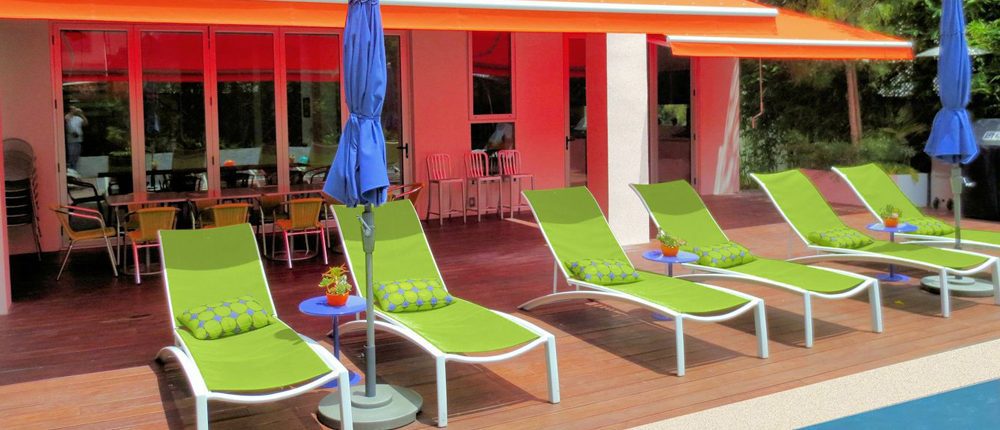A Guide to Buying Retractable Awning
As with any purchase, the wide array of options presented to a buyer looking for awning can potentially be daunting. Ultimately, a buyer’s purchase should reflect his or her considerations and the primary purpose for buying a product. This article seeks to help awning buyers funnel their purchase decisions and enable them to purchase the perfect awning to match their needs.
What are the Benefits of Buying Awning?
Before digging into the various options for awning, a buyer needs to first identify the overall benefit that he or she will derive from the purchase. The primary purpose of awnings is to provide protection from environmental elements such as sunlight, UV rays, rain and snow. Depending on the design, placement and utilization of the awning at home, on a vehicle or any other type of establishment, a user is presented with other benefits. These include:
- Lower outdoor temperatures during hot days
- Also helps lower indoor temperatures when installed on windows
- Lower electricity costs due to less air-conditioner usage
- Less clean-up during winter or rainy days
- Decreases wear-and-tear of outdoor furniture and equipment due to environmental factors
- Perfect source of shade for outdoor picnics when installed on vehicles
- Helps maximize an establishment’s space by providing Al Fresco seating areas
These are but a few benefits that can be provided by purchasing awning. The benefits that can be derived will depend highly on the type of awning, how and where it is installed.
Retractable vs Fixed
Retractable and fixed awnings can both be sound purchase decisions depending on how they will be utilized by the buyer. Fixed awnings are tried and tested solutions for protecting the entrances or windows of homes and establishments from weather conditions such as sunlight. If a homeowner is bothered by the consistent amount of sunlight that penetrates his or her home throughout the year, fixed awnings are the perfect set-and-forget option for them. On the other hand, while they may be convenient in most days, fixed awnings lack the flexibility to adapt to infrequent, yet extreme weather conditions such as storms or irregularly strong winds. Depending on the gravity of these weather conditions, fixed awnings may get damaged as they are fully exposed to such extremes.
Retractable awnings are also highly capable protective measures against environmental factors such as the sun, rain and snow. Additionally, they provide greater flexibility as users can simply deploy the awning on hot summer days and retract them to allow the sun to provide heat during colder seasons. In the event of extreme weather conditions, users can also retract the awning and reduce the chances of them getting damaged. While they may cost greater initially, the potential savings that a user can derive from having a retractable awning can potentially offset the replacement or repair costs of fixed awnings in the long run. Moreover, retractable awnings can be utilized in more applications, such as on vehicles that will be used for outdoor activities including camping or picnics.
Superior Awning offers users with automatic, self-supported retractable awnings that can be easily deployed or retracted. These additional options provide users with greater convenience and can be used for a wide array of applications.
Aluminum vs Canvas Awnings
Another important consideration when choosing your awning is the material that will be used for the product. In general, aluminum awnings are mostly used for fixed awnings, and thus carry the advantages and disadvantages of the product type. It is also important to note that aluminum awnings are generally more resistant to different environmental conditions as opposed to their canvass counterparts. Additionally, while mostly used in fixed installations, aluminum provides that extra durability towards extreme weather conditions, and can also protect a home from flying debris in the case of storms.
Canvas or Fabric awnings on the other hand have greater flexibility and can be used for retractable awnings. Canvas awning can be made of base materials such as cotton, vinyl and polyester. Product innovations in this category, such as the Sunbrella fabrics, offer significant protection against UV rays (as much as 98% blockage) and are designed to withstand various weather conditions with ease. Canvas awnings also provide greater flexibility for users as they are much easier to uninstall or retract should the need arise. They are also perfect for portability, in the case of installation for vehicles. Additionally, because of the constitution of the canvas material, the do not corrode or rust, unlike their aluminum counterparts.
Overall, with proper usage and maintenance, both canvas and aluminum awnings can last for a significant amount of time. The advantages and disadvantages presented above should serve as guidelines for buyers to determine the best type of product to fit their needs.
Design
Whether fixed or retractable, the overall design of an awning should complement the establishment, home or vehicle where it is installed. Superior Awning provides a deep level of customization and a wide array of options that covers the design, materials, shape and build of its awning products. Ultimately, Superior Awning aims to deliver the greatest value to its customers by offering products and services to match their needs.




